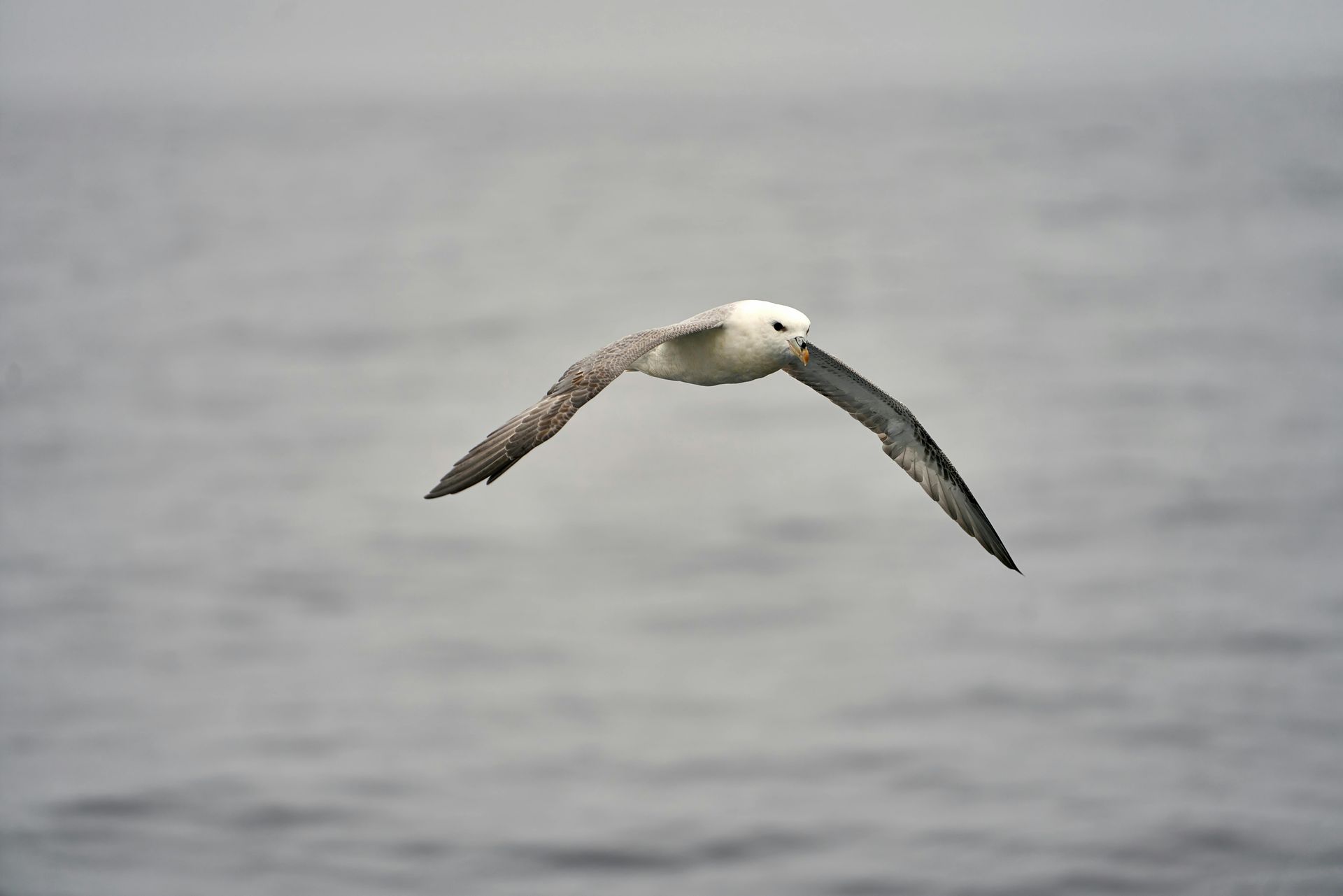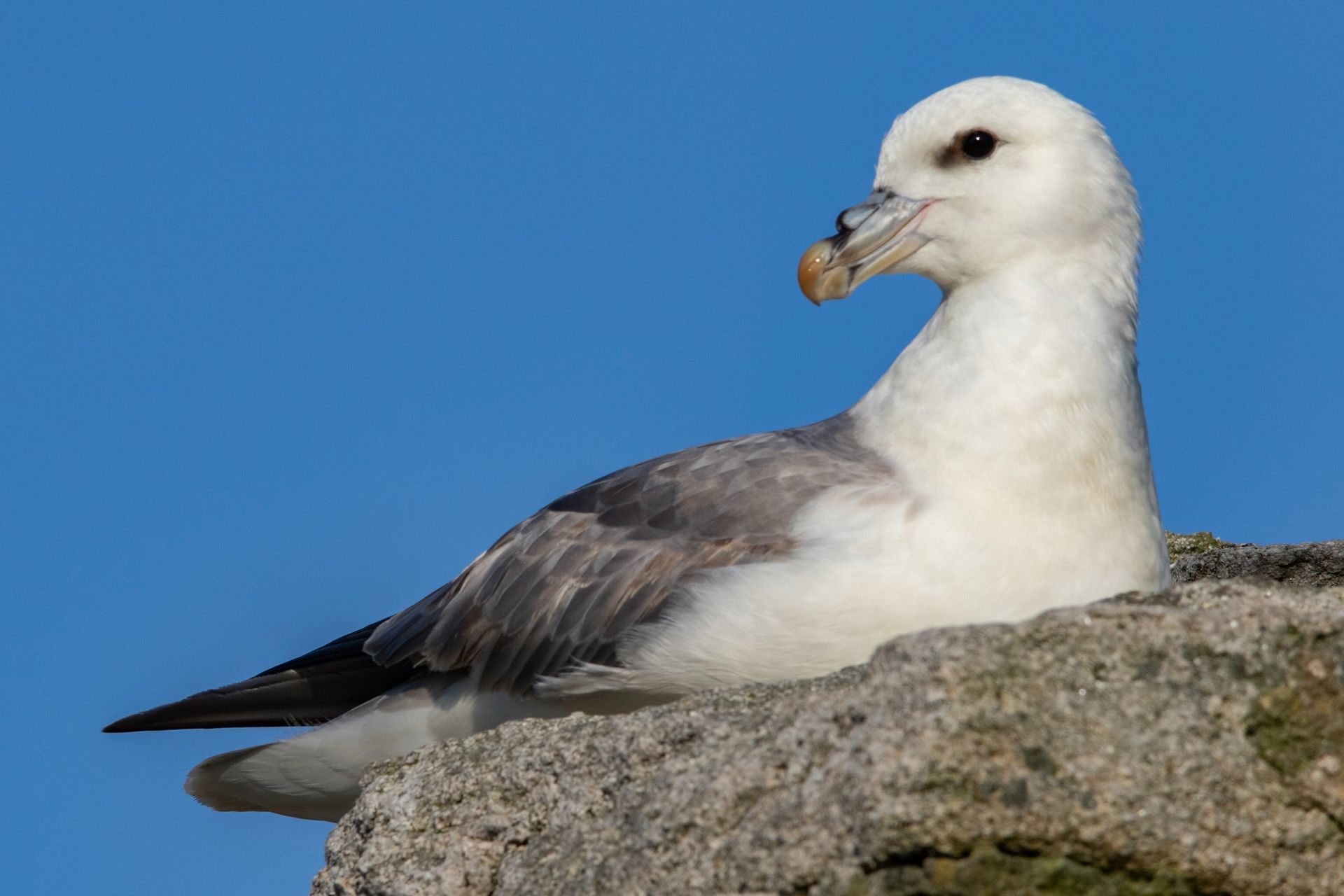The Northern Fulmar is a robust seabird known for its tube-shaped nostrils, stiff-winged flight, and ability to thrive in cold, stormy seas. Found in the North Atlantic and North Pacific Oceans, fulmars are often seen gliding effortlessly above the waves, searching for food. These long-lived seabirds play a vital role in marine ecosystems by helping maintain balance in fish and zooplankton populations.
Northern Fulmars are about 17-20 inches in length with a wingspan of 39-44 inches. They resemble gulls but have thicker bodies, stouter bills, and distinctive tube nostrils on top of their beaks. Their plumage can range from light gray and white to darker shades of gray and brown. Fulmars are opportunistic feeders, consuming fish, squid, plankton, and carrion.
Fulmars nest on steep cliffs, laying a single egg on a rocky ledge. Both parents take turns incubating the egg and feeding the chick after it hatches. Fulmar chicks are known for their unique defense mechanism—when threatened, they regurgitate foul-smelling oil to deter predators.
Natural predators of Northern Fulmars include large gulls and foxes, while human-related threats such as plastic pollution, oil spills, and bycatch in fishing gear pose significant risks. Despite these challenges, fulmars are resilient and continue to be common in many regions.

For your safety and the well-being of wildlife, please observe animals from a distance and avoid touching or disturbing them. If you encounter an animal that appears injured or in distress, contact a licensed wildlife rescue organization for guidance before intervening.
Found An Animal? Not sure how to help a wild animal in need? Learn when to step in, who to call, and how to help safely.
Did You Know?
- Northern Fulmars can live over 50 years, making them one of the longest-lived seabirds.
- Their tube-shaped nostrils help them excrete excess salt from seawater, allowing them to drink ocean water.
- Fulmars are known for their foul-smelling stomach oil, which they use as both a defense mechanism and an energy-rich food source for chicks.
- They are powerful fliers and can travel hundreds of miles in a single day in search of food.
- Unlike many seabirds, fulmars often forage at night, taking advantage of bioluminescent prey.
- Fulmars are closely related to albatrosses and share many similar traits, including long-distance flight capabilities.
- Fulmars can detect prey from great distances using their keen sense of smell, a rare trait among seabirds.
- They are monogamous and often return to the same nesting site with the same partner year after year.
Problems Faced In The Wild
- Plastic Pollution: Ingestion of plastic debris can lead to injury or death.
- Oil Spills: Contaminated feathers reduce buoyancy and insulation, causing hypothermia.
- Bycatch: Accidental capture in fishing gear poses a significant threat.
- Climate Change: Rising sea temperatures and altered prey availability impact survival.
- Human Disturbance: Increased boat traffic can disturb feeding and nesting areas.
- Predation: Eggs and chicks are vulnerable to predators such as gulls and foxes.
Tips For Cohabitation
- Support Clean Oceans: Reduce plastic waste and participate in coastal cleanups.
- Limit Boat Traffic Near Colonies: Avoid disturbing nesting areas during the breeding season.
- Dispose of Fishing Gear Properly: Prevent entanglement by keeping waterways clean.
- Monitor Water Quality: Support efforts to reduce pollution in marine ecosystems.
- Participate in Citizen Science: Help track seabird populations and report sightings.
- Educate the Community: Share the importance of seabirds in maintaining healthy marine environments.



